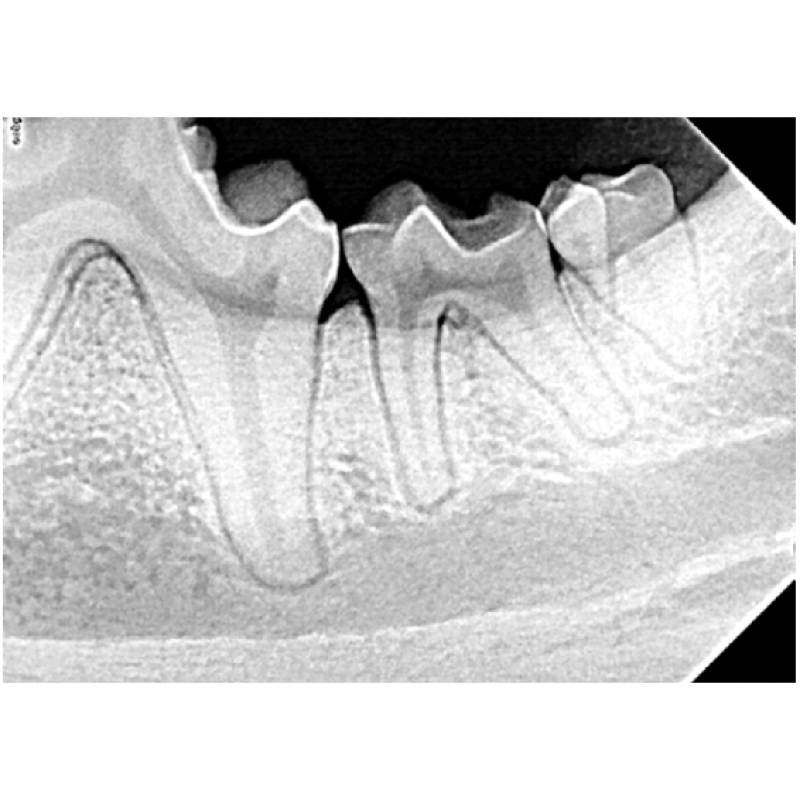Step One: Identify the correct teeth.
The Next image taken is of the mandibular premolars. Highlighted on the dental chart and outlined in the picture below.
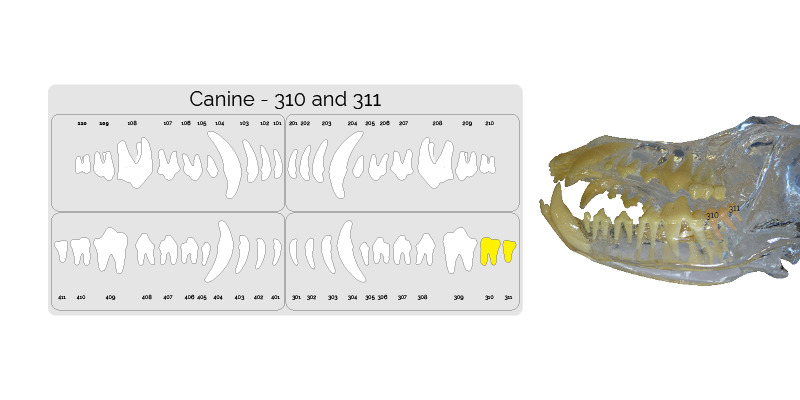
Step Two. Placing the sensor
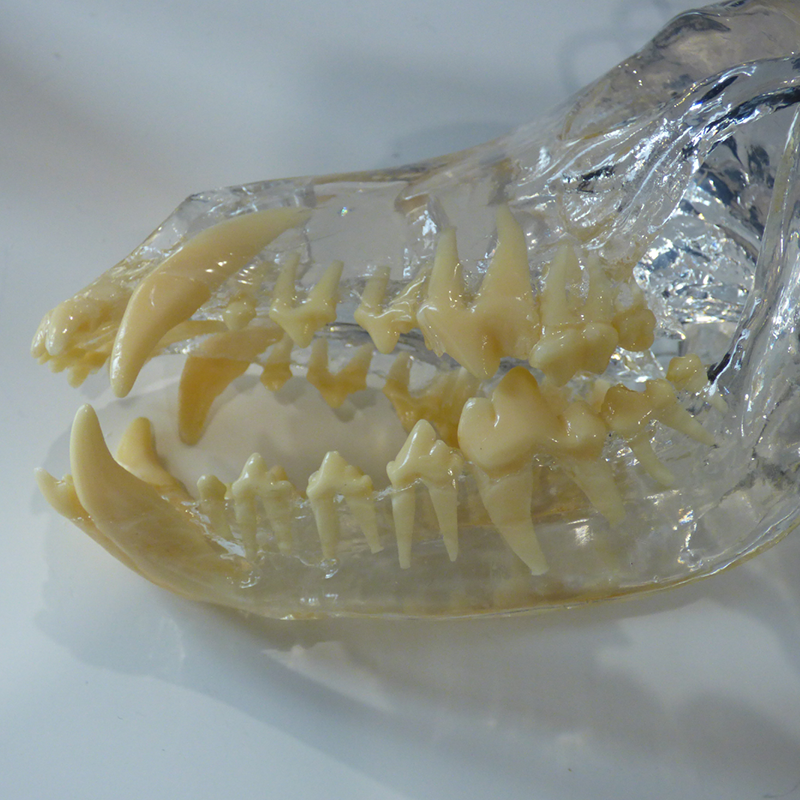
Place the patient in lateral recumbancy.
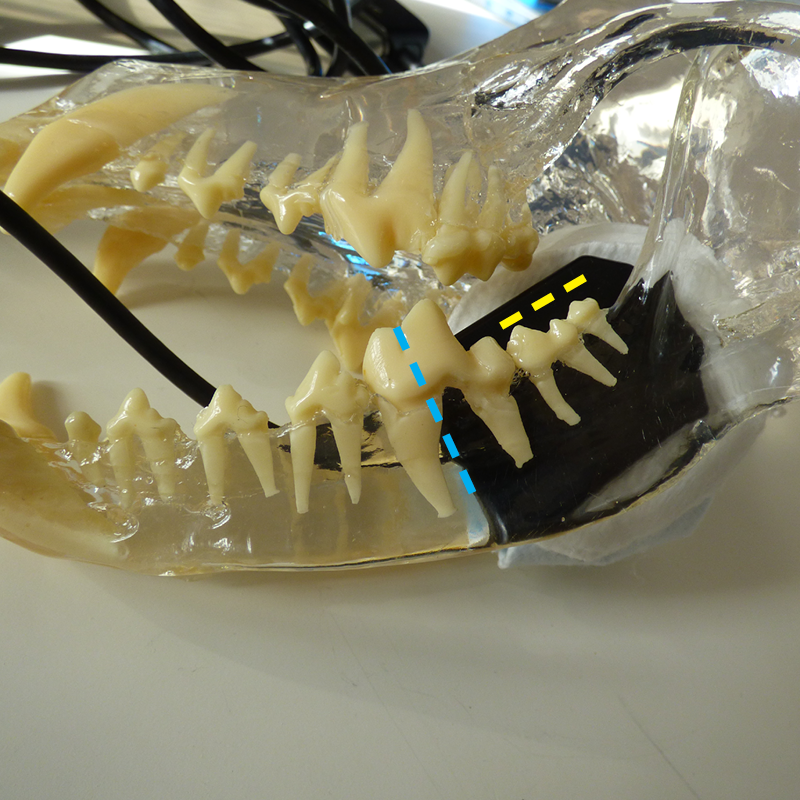
The back of the tongue provides a good cradle for the sensor. Place it in the mouth so that the cusps of 310 and 311 are inside the sensor boundary. Marked in yellow.
Ensure that the short edge of the sensor is aligned with the developmental groove of 309. Marked in blue.
Step Three. Position the tube head opposite the sensor so that the beam covers the sensor.

Place the cone opposite the sensor. Line up the center of the cone with the center to the top edge of the sensor. This will ensure that the beam completely covers the sensor.
Step Four. Roll the tube head to the correct angle.
As the beam is already aligned with the sensor simply roll the sensor up so that the it is directly perpendicular to the sensor. This ensures that the generator is parallel to the sensor. Hence the name the parallel technique.

The tube head can be rolled up from its position covering the sensor from step three to the correct angle marked with the solid green line.
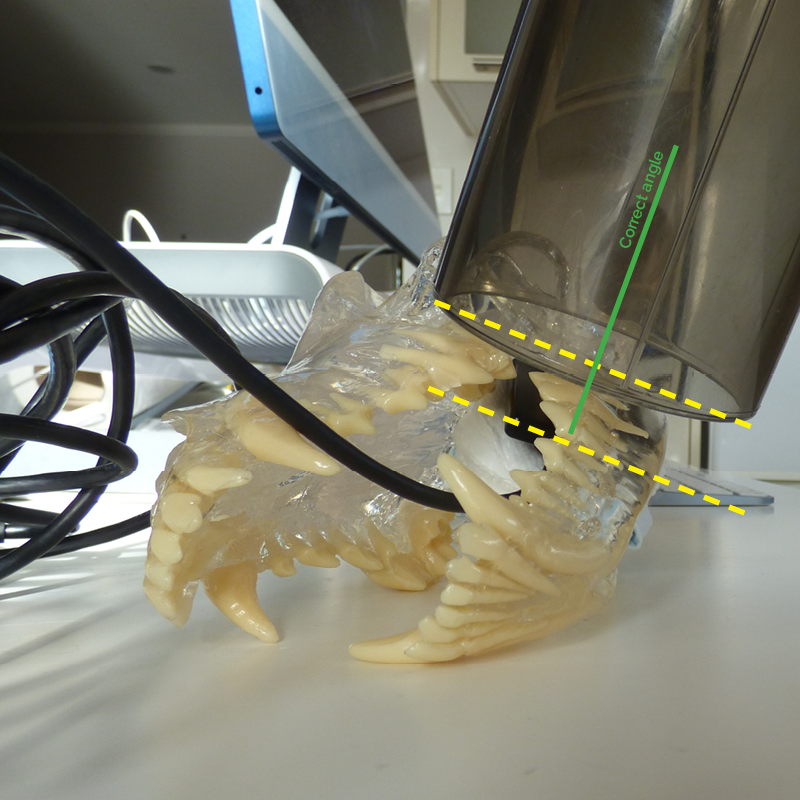
When the tube head is in the correct angle the base of the cone is parallel to the sensor. Marked with the two yellow lines.
Step Five. Tube head orientation to patient mid-line.
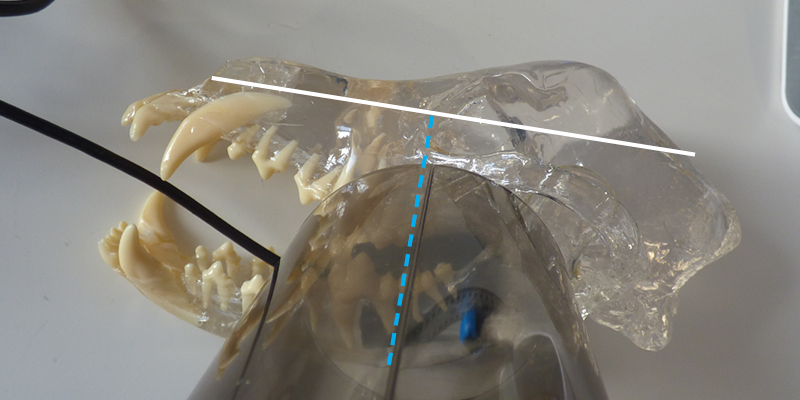
The standard relationship for lower molar teeth is perpendicular to the mid-line.
Step Six. Radiation factors
The standard factors with a digital sensor are as follows:
| Patient Size | Location | KV | MAS |
| <= 15 Kg | Mandibular Molars 310 and 311 | 60 | 0.125 |
| > 15 Kg | Mandibular Molars 310 and 311 | 60 | 0.160 |
